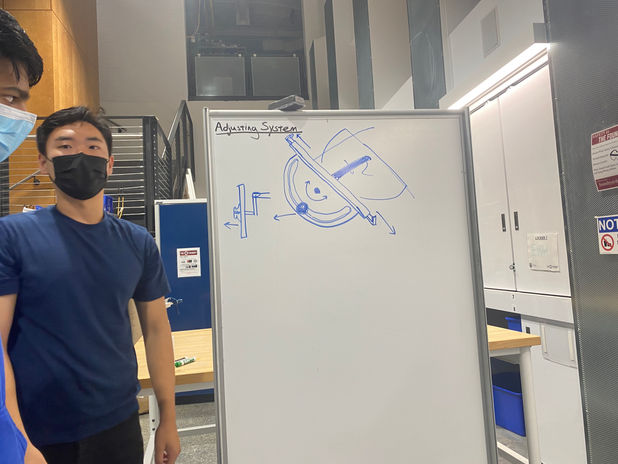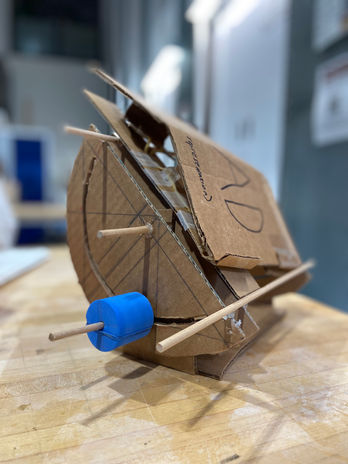Adjustable Solar Panel Stand

Overview: Makerere University students in Kampala, Uganda—in collaboration with Duke University—needed a manual or autonomous angle adjusting solar panel stand for their engineering makerspace. Their space, housed in a shipping container, is powered by flat solar panels that had zero angle adjustability. To maximize solar energy collection, the project’s goal was to create an adjustable solar panel stand with a wide, flexible range of angles.

Our team consisted of 4 engineering freshmen:
-
Keely Blahauvietz
-
Andrew Cao
-
Shaan Narayan (me!)
-
Kennedy Robinson
With the support of: Griffen Dayton (our TA), Dr. Rebecca Simmons (our professor) and Dr. Rabih Younes (our technical mentor).
To arrive at our solution, we went through a rigorous brainstorming, ideation, prototyping, and testing process. After researching the problem, we brainstormed both individually and as a team. We then created decomposition charts and Pugh screening and scoring matrices to create complete ideas to prototype. Our solution was a metal frame with a spring braking system that manually adjusts angles by following a protractor-shaped arc path. After completing low and medium fidelity prototypes, we revisited our ideas, concluded what was and what wasn't successful, and started on our final solution. Our changes included using wood for the frame instead of metal and utilizing pinholes rather than a spring brake in order to support the weight of the solar panel.


The Solution: Our final prototype was a wooden frame with a pinhole braking system that manually adjusts angles by following a protractor shaped arc path. The stand could successful be adjusted in about 5-6 seconds in increments of 10° from -50° to 50°.
Features:
-
Wooden dowel and large ball bearing for smooth adjustment.
-
Precision angles via laser cutter engraving.
-
Viewing hole for user feedback.
Lessons Learned: In addition to having hands-on experience in solving a real-world problem, our team learned how to go about the iterative design process.
Throughout this project, our team learned:
-
Brainstorming techniques.
-
How to develop and evaluate both design criteria and solution ideas.
-
How to effectively prototype and test solutions.
-
How to present our project to our client and a wider audience.
-
How to effectively manage a project via Trello.
In addition to our physical solution, our team completed 5 technical memos, 2 oral presentations, and a concluding poster presentation.











